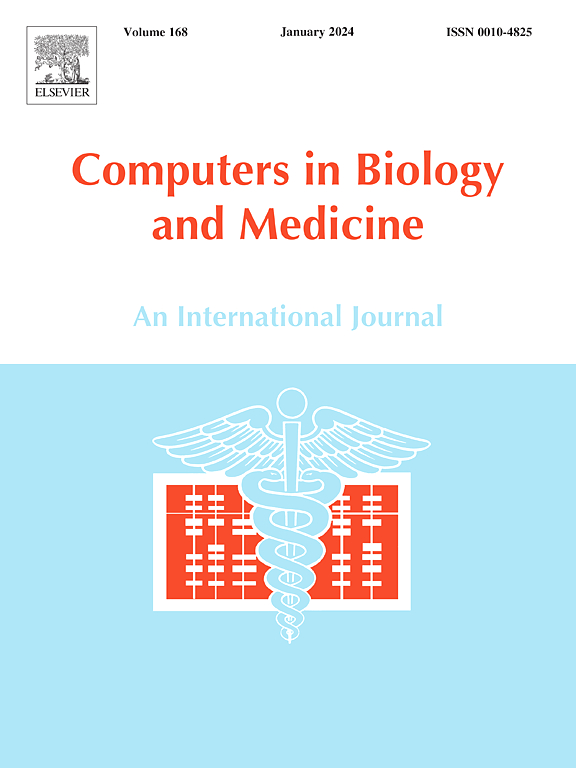用于骨髓显微图像中淋巴细胞白血病检测的高效空间引导学习网络
IF 6.3
2区 医学
Q1 BIOLOGY
引用次数: 0
摘要
白血病是一种在骨髓中增殖的血液学肿瘤,严重影响患者的生存。早期和准确的诊断是有效治疗白血病的关键。传统的诊断方法依赖于专家对骨髓涂片显微图像的主观分析。这种方法既耗时又复杂。尽管最近在深度学习方面取得了进展,但由于缺乏高质量的数据集,自动化的白血病检测仍然有限,主要集中在单细胞图像分类上,而不是在整个幻灯片图像中进行精确的细胞水平检测,以及形态学异质性、染色不均匀、尺度变化和骨髓涂片中细胞边界闭塞等挑战。为了解决这些挑战,我们构建了一个包含1794张高质量显微图像的新数据集,为淋巴细胞白血病检测建立了新的基准。此外,我们开发了一种基于空间引导学习(SGLNet)的全自动诊断方法,能够快速分析白血病的整个幻灯片。具体来说,我们对基线算法进行了一些创新的改进,包括空间引导学习框架、尺度感知融合模块、小对象增强机制和有效的交联损失函数。这些改进有效地解决了形态学相似性和复杂背景对白血病检测的影响,显著提高了检测精度。结果表明,SGLNet检测急性淋巴细胞白血病和慢性淋巴细胞白血病的平均准确率分别为95.9%和98.6%。这些结果证明了我们的方法在识别淋巴母细胞白血病细胞方面的效率和准确性,显著提高了大规模临床诊断,并支持临床医生制定个性化治疗计划。本文章由计算机程序翻译,如有差异,请以英文原文为准。
High-efficiency spatially guided learning network for lymphoblastic leukemia detection in bone marrow microscopy images
Leukemia is a hematologic tumor that proliferates in bone marrow and seriously affects the survival of patients. Early and accurate diagnosis is crucial for effective leukemia treatment. Traditional diagnostic methods rely on experts’ subjective analysis of bone marrow smears microscopic images. This approach is time-consuming and complex. Despite recent advances in deep learning, automated leukemia detection remains limited due to the scarcity of high-quality datasets, the prevailing focus on single-cell image classification rather than precise cell-level detection in whole slide images, along with challenges such as morphological heterogeneity, uneven staining, scale variation, and occluded cell boundary in bone marrow smears. To address these challenges, we construct a novel dataset comprising 1794 high-quality microscopic images, establishing a new benchmark for lymphocytic leukemia detection. Additionally, we develop a fully automated diagnostic method based on spatially-guided learning (SGLNet), enabling rapid whole slide analysis of leukemia. Specifically, we introduce several innovative enhancements to the baseline algorithm, including the spatially-guided learning framework, scale-aware fusion module, small object-enhancing mechanisms, and efficient intersection over union loss function. These improvements effectively address the impact of morphological similarity and complex backgrounds in leukemia detection, significantly enhancing detection accuracy. Finally, the results show that SGLNet achieves mean average precision scores of 95.9 % and 98.6 % in detecting acute lymphoblastic leukemia and chronic lymphocytic leukemia, respectively. These results demonstrate the efficiency and accuracy of our method in identifying lymphoblastic leukemia cells, significantly enhancing large-scale clinical diagnosis, and supporting clinicians in developing personalized treatment plans.
求助全文
通过发布文献求助,成功后即可免费获取论文全文。
去求助
来源期刊

Computers in biology and medicine
工程技术-工程:生物医学
CiteScore
11.70
自引率
10.40%
发文量
1086
审稿时长
74 days
期刊介绍:
Computers in Biology and Medicine is an international forum for sharing groundbreaking advancements in the use of computers in bioscience and medicine. This journal serves as a medium for communicating essential research, instruction, ideas, and information regarding the rapidly evolving field of computer applications in these domains. By encouraging the exchange of knowledge, we aim to facilitate progress and innovation in the utilization of computers in biology and medicine.
 求助内容:
求助内容: 应助结果提醒方式:
应助结果提醒方式:


